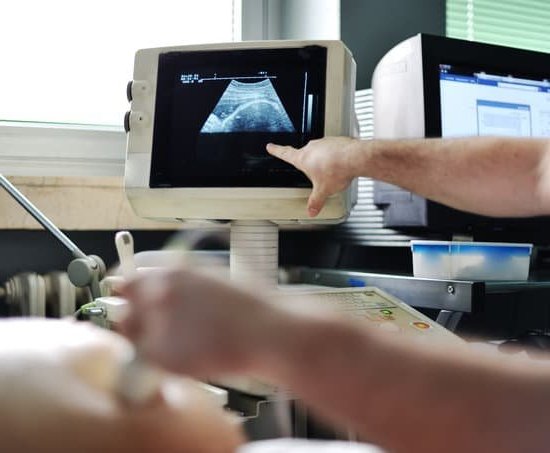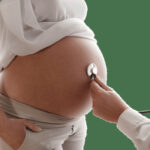Experiencing cramping in early pregnancy can be a cause for concern and anxiety for many expectant mothers. The question “is cramping normal in early pregnancy” is often asked, and it’s important to understand the causes, symptoms, and when to seek medical attention. In this section, we will delve into the topic of early pregnancy cramping to provide you with valuable insights and information.
Early pregnancy cramping is a common occurrence for many women as their bodies undergo significant changes to accommodate the growing fetus. Understanding the nature of these cramps and what triggers them can help alleviate any worries or fears associated with this symptom. By exploring the causes and differentiating normal cramping from concerning symptoms, expectant mothers can confidently navigate through the early stages of pregnancy.
It is essential to recognize the various accompanying symptoms that may occur alongside cramping in early pregnancy. By being aware of these common indicators, individuals can better manage their discomfort and seek appropriate medical assistance if needed. Additionally, tips for managing cramping discomfort will be provided to offer practical advice and support for those experiencing this symptom in the early stages of pregnancy.
Causes of Cramping in Early Pregnancy
Early pregnancy can be an exciting and nerve-wracking time for expectant mothers, especially when it comes to understanding the various symptoms that may arise. One common concern among many women is cramping in early pregnancy. So, is cramping normal in early pregnancy? The answer is yes, in many cases, mild cramping can be a normal symptom of early pregnancy.
One of the primary causes of cramping in early pregnancy is the implantation process. This occurs when the fertilized egg attaches itself to the uterus lining, which can cause cramping and even light spotting for some women. Additionally, as the uterus begins to expand to accommodate the growing fetus, mild cramping is also common. It’s important to keep in mind that every woman’s body and pregnancy experience are different, so the severity and frequency of cramping can vary.
Another factor that may contribute to cramping in early pregnancy is hormonal changes. Fluctuations in hormone levels during this time can lead to uterine contractions, resulting in mild to moderate cramps. These cramps are often similar to those experienced during menstruation and are typically nothing to worry about unless they become severe or are accompanied by other concerning symptoms.
To help differentiate normal cramping from concerning symptoms, it’s crucial for expectant mothers to pay attention to the nature of their cramps. Normal early pregnancy cramps are usually mild and intermittent, whereas concerning symptoms may include severe pain, persistent cramping, and heavy vaginal bleeding. Understanding these distinctions can provide peace of mind for women experiencing typical early pregnancy discomforts.
| Causes of Cramping | Description |
|---|---|
| Implantation Process | The fertilized egg attaches itself to the uterus lining causing mild cramping. |
| Hormonal Changes | Fluctuations in hormone levels leading to uterine contractions resulting in mild to moderate cramps. |
Differentiating Normal Cramping From Concerning Symptoms
During the early stages of pregnancy, it is natural for women to experience cramping as the body goes through various changes to accommodate the growing fetus. It is important to differentiate normal cramping from concerning symptoms in order to alleviate any anxiety or worry. Normal cramping in early pregnancy is often described as mild and intermittent, similar to menstrual cramps. This type of cramping is typically not accompanied by heavy bleeding or severe pain.
On the other hand, concerning symptoms that may accompany cramping in early pregnancy include heavy vaginal bleeding, severe abdominal pain, dizziness, and fainting. If a pregnant woman experiences any of these symptoms along with cramping, it is important to seek medical attention immediately. These could be signs of a potential miscarriage or an ectopic pregnancy.
It is also essential to take note of any changes in the intensity and frequency of the cramping. While mild and infrequent cramping is considered normal, persistent and intense cramping should not be overlooked. Keeping track of these details can provide valuable information for healthcare providers when assessing the situation. Understanding what constitutes normal cramping versus concerning symptoms can help ease the worries of expectant mothers and ensure proper attention is given when necessary.
Ultimately, differentiating between normal cramping and concerning symptoms is crucial for expecting mothers to have a peace of mind during early pregnancy. Keeping track of any accompanying symptoms and changes in the nature of the cramps can provide valuable information for healthcare providers when seeking advice or treatment for discomfort. Knowing when to seek medical attention can help ensure a safe and healthy pregnancy journey.
Common Symptoms Accompanying Cramping in Early Pregnancy
Cramping is a common symptom experienced by many women during the early stages of pregnancy. It is important to note that cramping is normal in early pregnancy, and it is typically caused by the changes occurring in the uterus as the embryo implants itself and the uterus expands to accommodate the growing fetus. However, along with cramping, there are several other symptoms that women may experience during early pregnancy.
One common symptom that often accompanies cramping in early pregnancy is light spotting or bleeding. This can be alarming for many women, but it is usually not a cause for concern. Light spotting can occur when the embryo implants itself into the uterine wall, causing some minor bleeding. It is important to distinguish this from heavy bleeding, which could be a sign of a more serious issue and should be immediately brought to the attention of a healthcare provider.
Another common symptom that may accompany cramping in early pregnancy is nausea and vomiting. Often referred to as morning sickness, these symptoms typically start around six weeks into the pregnancy and can last throughout the first trimester. While uncomfortable, morning sickness is generally considered a normal part of early pregnancy and does not necessarily indicate any problems with the pregnancy.
Breast tenderness and changes in breast size are also commonly reported symptoms in early pregnancy, often accompanying cramping and other signs of implantation. Hormonal changes cause an increase in blood flow to the breasts, making them feel swollen, tender, or even painful to touch.
| Accompanying Symptoms | Description |
|---|---|
| Light Spotting or Bleeding | This can occur during implantation and should not be mistaken for heavy bleeding. |
| Nausea and Vomiting (Morning Sickness) | Typically starts around six weeks into pregnancy and can last throughout the first trimester. |
| Breast Tenderness | Caused by hormonal changes, leading to increased blood flow. Breasts may feel swollen or sensitive. |
Overall, it’s essential for expectant mothers to understand that experiencing cramping along with these accompanying symptoms is normal during early pregnancy. However, if at any point discomfort becomes severe or any concerning symptoms develop, seeking medical attention promptly is advised.
Tips for Managing Cramping Discomfort
When experiencing cramping in early pregnancy, it is important to have some tips on managing the discomfort. It is not uncommon for women to experience cramping during the early stages of pregnancy, but knowing how to ease this discomfort can make the journey more bearable.
Stay Hydrated
One of the best ways to manage cramping discomfort in early pregnancy is by staying hydrated. Dehydration can exacerbate cramping, so it’s important to drink plenty of water throughout the day. This can help ease muscle tension and reduce the frequency and intensity of cramps.
Rest and Relaxation
Engaging in rest and relaxation techniques can also help manage cramping discomfort. Taking breaks throughout the day to rest and alleviate stress can reduce muscle tension, which may contribute to cramping. Gentle activities such as prenatal yoga or meditation can also be beneficial in easing discomfort.
Warm Compress
Applying a warm compress to the lower abdomen can provide relief from cramping. The warmth helps to relax the muscles and alleviate any tension causing the discomfort. Taking a warm bath or using a heating pad on a low setting can also offer relief from cramps.
By incorporating these tips into your routine, you can effectively manage cramping discomfort during early pregnancy. However, if you experience severe or persistent cramping, it is important to consult with your healthcare provider for further evaluation and guidance.
When to Seek Medical Attention for Cramping in Early Pregnancy
Understanding the Importance of Seeking Medical Attention
While cramping is often considered a normal part of early pregnancy, there are instances where it may be indicative of a more serious issue. It is important for pregnant individuals to be able to differentiate between normal cramping and symptoms that require medical attention. Knowing when to seek medical help can ensure the health and safety of both the pregnant individual and the developing fetus.
Signs That Indicate the Need for Medical Attention
If cramping is severe, persistent, or accompanied by other concerning symptoms such as heavy bleeding, fever, chills, dizziness, or sharp abdominal pain, it is crucial to contact a healthcare provider immediately. Additionally, if the cramping is localized on one side of the abdomen, it may indicate an ectopic pregnancy which requires immediate medical intervention.
Importance of Consulting With a Healthcare Provider
It is always advisable to consult with a healthcare provider if experiencing any doubts or concerns regarding cramping in early pregnancy. A healthcare professional can provide personalized guidance based on the specific symptoms and medical history of the individual. As every pregnancy is unique, seeking medical advice can provide reassurance and necessary support during this crucial time.
Seeking medical attention for cramping in early pregnancy should not be viewed as an overreaction but rather as a proactive measure to ensure the health and well-being of both the pregnant individual and their baby. It is always better to address any concerns promptly rather than delay seeking assistance when it may be needed.
Personal Experiences
During the early stages of pregnancy, many women experience cramping, and it can be a source of worry and confusion. It may seem as though you are alone in experiencing these uncomfortable sensations, but rest assured that cramping is a common symptom during the first trimester. To shed light on this, here are real stories from women who have gone through similar experiences:
- One woman shared her experience of feeling mild cramps similar to period pain during the early weeks of her pregnancy. She described it as uncomfortable but not unbearable, and it eventually subsided after a few weeks.
- Another woman mentioned feeling sharp, shooting pains on one side of her lower abdomen. She was concerned about experiencing possible complications such as an ectopic pregnancy, but after consulting with her healthcare provider, she learned that the pain was due to normal stretching of the uterus.
- A third woman recounted experiencing consistent, dull cramps accompanied by light spotting. Initially worried about miscarriage, she sought medical advice and learned that it was often normal to have some light bleeding and cramping in early pregnancy.
These personal stories highlight the varied experiences women may have with cramping in early pregnancy. It is important to remember that every individual’s journey is unique and that seeking guidance from a healthcare provider is crucial for addressing any concerns or uncertainties.
Expert Advice
Many pregnant women experience cramping in the early stages of their pregnancy, and it is completely normal. However, it is important to understand what healthcare providers say about this common symptom. Here are some expert insights into cramping in early pregnancy:
1. Talks with Your Doctor: It is important to schedule regular appointments with your healthcare provider during your pregnancy. Discuss your concerns about cramping and any other symptoms you may be experiencing. Your doctor can provide personalized advice and reassurance based on your specific situation.
2. Stay Informed: Healthcare providers emphasize the importance of staying educated about the changes happening in your body during pregnancy. Understanding what is typical and what may warrant medical attention can help ease worry and anxiety about experiencing cramping.
3. Listen to Your Body: While most cramping in early pregnancy is normal, it is essential to pay attention to your body’s signals. If you notice any unusual or severe symptoms accompanying the cramping, do not hesitate to contact your healthcare provider for guidance.
Additionally, healthcare providers commonly advise pregnant women to stay hydrated, get plenty of rest, and avoid strenuous activities that can exacerbate cramping. It is also recommended to take prenatal vitamins as prescribed for overall health and well-being during this stage.
– Remember that every woman’s experience with early pregnancy cramping can vary, so it’s crucial to address any concerns with a trusted healthcare professional to ensure a healthy pregnancy journey.
Conclusion
In conclusion, experiencing cramping in early pregnancy is a common occurrence for many women. While it can be concerning, especially for first-time mothers, it is important to understand that this discomfort is often a normal part of the early stages of pregnancy. As the uterus undergoes changes and the body adjusts to the growth of the baby, cramping may occur as a natural response.
It is essential for women to be aware of the causes of cramping in early pregnancy and to differentiate between normal cramping and symptoms that may indicate a more serious issue. By understanding the accompanying symptoms and seeking medical attention when necessary, women can better manage their discomfort and ensure a healthy pregnancy.
While it is always important to seek guidance from healthcare providers for personalized advice, there are also various tips for managing cramping discomfort at home. From practicing relaxation techniques to staying hydrated and using heat therapy, there are many ways for women to alleviate their discomfort and embrace the journey of early pregnancy. Ultimately, by staying informed and seeking support when needed, women can navigate through this stage with confidence and peace of mind.
Frequently Asked Questions
Is It Normal to Get Cramps 5 Weeks Pregnant?
Yes, it is normal to experience cramps at 5 weeks pregnant. These cramps are usually mild and can be attributed to the uterus expanding and the ligaments stretching to accommodate the growing baby.
Is Cramping Normal at 7 Weeks Pregnant?
Cramping at 7 weeks pregnant can also be considered normal. The body is adjusting to the pregnancy, and as the uterus continues to expand, cramping may occur. However, if the cramps are severe or accompanied by bleeding, it’s important to seek medical advice.
Is It Normal to Have Cramps at 6 Weeks Pregnant?
Cramps at 6 weeks pregnant are often a common symptom. As the embryo grows and the uterus expands, mild cramping may occur. It’s typically nothing to worry about unless the cramps are severe or there is heavy bleeding along with it. If in doubt, it’s best to consult a healthcare provider for reassurance.

Welcome to my fertility blog. This is a space where I will be sharing my experiences as I navigate through the world of fertility treatments, as well as provide information and resources about fertility and pregnancy.





